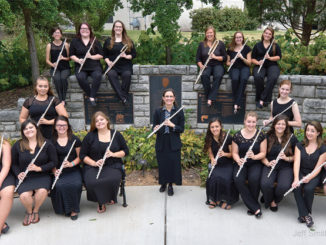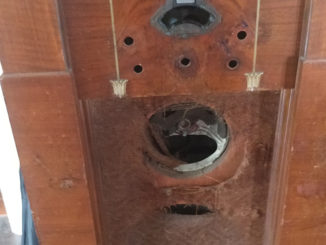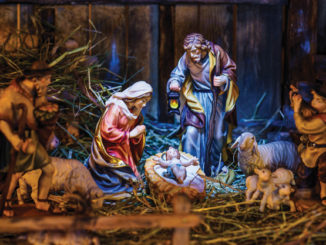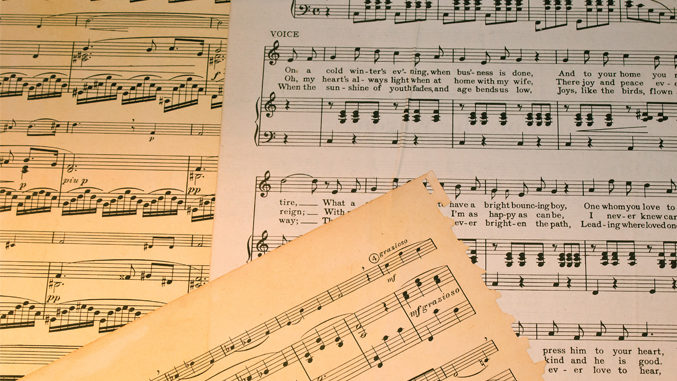
by Lee Stott
Philosopher/writer H. G. Wells advises us not to “allow the clock and the calendar to blind (us) to the fact that each moment of life is a miracle and a mystery.” Sound advice as we enter 2018.
January seems as good a time as any to pause, to reflect, and to glance back. Where have we been? What was it like a century ago? It might be fun, even informative, to find out.
Two years ago, syndicated columnist Robert Samuelson looked back at the way we were a hundred years earlier. Here are some of his findings:
“By 1915, the United States was the world’s richest nation – and yet, most Americans were dirt poor by today’s standards,” Samuelson writes. “Adjusted for inflation, average wages were about a third of what full-time workers now earn. The average workweek in manufacturing hovered around 50 hours. Many worked a half-day on Saturdays. Less than a third of homes had electric lights. Less than a fifth of the adult population were high school graduates. How we’ve changed.”
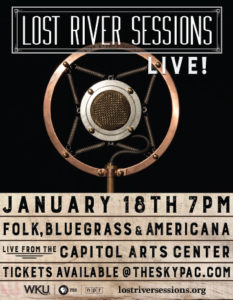
A century ago, as now, immigration was at near-record levels, constituting about 13 percent of the U.S. population. Then, as now, this was controversial. But as writer Robert Samuelson pointed out, we absorbed the newcomers and suggests that in spite of many conflicts, we will do so again.
The Bureau of Labor Statistics in its Monthly Labor Review points out that a hundred years ago renters outnumbered homeowners roughly 80 to 20 percent. Contrast that with nearly 65 percent U.S. home ownership today. In 1915, what people rented was usually crowded and dirty. Few working class families had anything like hot running water. Heating was typically by a potbelly stove or a coal furnace in the basement.
Two-thirds of America’s homes back then were lighted by Coleman lanterns, kerosene lamps or natural gas. Ice boxes served to keep foods cold, but their small size meant frequent trips to the grocery store.
In 1944, our family lived in Lincoln, Neb. An up-and-coming place, so I thought, in spite of a seeming lack of things “cultural.” Ours, from the perspective of my 12-year-old mind, was a thoroughly modern family. Mother owned a late-model Bendix automatic washing machine. There was no clothes dryer, so the wet laundry hung to dry in the basement or, on rare good days, was flapping on the outdoors clothesline.
A floor-model Silvertone Superhetrodyne long- and short-wave 12-tube two-speaker radio sat in the dining room. A black telephone, attached to the wall, occupied a corner table. Dad drove a 1935 battleship gray Ford V-8. It even had its own radio. Down in the basement the very latest – a natural gas furnace heated our 1915 bungalow. We had arrived, baby! If only Thomas Jefferson could see us now!
What was Bowling Green like a century ago? People lived in freely-mixed style housing, including “T-Plan” and tenant houses lining West Main, clustered around St. Joseph Church and reaching into Delafield. A collection of larger closely spaced Greek Revival, Queen Anne and Italianate houses were built along Chestnut, State, College streets and East Main. Some new Craftsman-style homes were beginning to spill across Laurel Avenue (31W ByPass).
Some of these and other neighborhoods were somewhat tied by a streetcar line to the downtown business district, pushing west from Fountain Square to Adams Street where the L&N Depot stood before it was moved.
There were attractions to suit many tastes. The Columbia Theater, originally a vaudeville house, was redesigned as a movie palace and renamed the Capitol. Flicks could be seen for a nickel or a quarter.
The Potter Opera House, at Main and College, attracted renowned artists of the day to perform on its stage. At first there was Odean Hall, a remodeled building turned theater, one of many businesses that burned in 1899. Eventually, the Potter Opera House became a busy place offering plays (some by Shakespeare), comedy, operettas and minstrels.
Three small institutions of higher learning – Potter College, Ogden College and Western State Normal School – all either occupied space on the Hill or near it. Western State Normal provided many dramatic and musical events. In 1911, Franz Strahm organized the Oratorio Society at Western State Normal. The school sponsored a Music Festival one year that drew prominent musicians of Nashville and Louisville, as well as Freda Hempel, “world’s greatest coloratura soprano.”
Not bad for a town of 9,173, according to the 1910 census, and 9,638 in 1920. BG was a going place a hundred years ago with a big future ahead. Henry Wadsworth Longfellow looked at it philosophically: “For time will teach thee soon the truth, there are no birds in last year’s nest.” And so we move on.
HAVE YOU BEEN TO A “PRISM” CONCERT YET?
It will be the 23rd Annual Western Kentucky University PRISM Concert, featuring the WKU Wind Ensemble, Jazz Band, Symphony, Red Shirts, Treble Makers, Steel Drum B
and, and many more exciting WKU Department of Music ensembles. The lights go off at Van Meter Hall at 8 p.m. sharp Friday, January 19, for this unique musical experience.
THE HILLS ARE ALIVE…
Richard Rodgers wrote the music, Oscar Hammerstein II provided the lyrics, with book by Howard Lindsay and Russel Crouse. A fresh new production is booked for SKyPAC Friday, January 19, with curtain at 8 p.m.
“The Sound of Music” is based on the memoir of Maria von Trapp, “The Story of the Trapp Family Singers.” Set in Austria on the eve of the Anschluss in 1938, the musical tells the story of Maria, who takes a job as governess to a large family while she decides whether to become a nun. She falls in love with the children, and eventually their widowed father, Captain von Trapp. He is ordered to accept a position in the German navy, but he opposes the Nazis. He and Maria decide on a plan to flee Austria with the children.
The original Broadway production starred Mary Martin and Theodore Bikel. It opened in 1959, won five Tony Awards, including Best Musical. The year 2015 marked the 50th anniversary of the film version, the most successful movie musical in history, which starred Julie Andrews and Christopher Plummer. The film won five Academy Awards. In 2013, “The Sound of Music” was the first live TV production of a musical for over 50 years.
LOST RIVER SESSIONS
Lost River Sessions continue to bring the charismatic, story-telling nature of folk, bluegrass and Americana music to the Capitol Arts Center stage, and heard live on WKU Public Radio (88.9 FM), streaming on wkyufm.org. This month’s session is slated for 7 p.m. Thursday, January 18.
About the Author:
Lee Stott is retired from WKU Public Radio, lives near Franklin with his daughter Cindy Wade’s family and has 30 grandchildren and one great-grandson.

